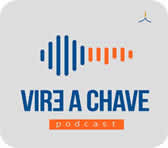A justiça em seu pior e melhor ângulo: vieses cognitivos na análise da prova audiovisual
Vistas: 66Palabras clave:
Processo penal, Probática, Provas judiciais, Provas audiovisuais, Vieses cognitivosResumen
As provas audiovisuais podem proporcionar vários benefícios para o sistema de justiça. Além de facilitar o registro dos atos processuais, vídeos podem enriquecer o acervo probatório, retratando uma versão privilegiada de fatos ocorridos. Apesar disso, a sua interpretação pode ser influenciada por alguns vieses que têm sido estudados pelas ciências cognitivas, como o viés de perspectiva de câmera, o viés de câmera de peito e o viés de câmera lenta. Neste artigo, analisam-se os possíveis impactos desses vieses no sistema de justiça, focando alguns efeitos no campo processual. A existência de tais vieses exige uma maior cautela na valoração da prova audiovisual, inclusive para mitigar o seu caráter de “trunfo probatório”. A partir de uma revisão crítica e sistemática da literatura na área, propõem-se algumas medidas para minimizar os efeitos danosos desses vieses na valoração da prova audiovisual, fornecendo as balizas iniciais de uma reflexão a ser aprofundada.
Descargas
Publication Facts
Reviewer profiles N/D
Author statements
Indexado: {$indexList}
- Academic society
- Instituto Brasileiro de Ciências Criminais
- Editora:
- Editora Revista dos Tribunais (RT)
Citas
ADELSON, E. H. Checker shadow illusion. Retrieved 31 de maio de 2005. 1995.
ARIEL, Barak; FARRAR, William A.; SUTHERLAND, Alex. The effect of police body-worn cameras on use of force and citizens’ complaints against the police: A randomized controlled trial. Journal of quantitative criminology, v. 31, n. 3, p. 509-535, 2015.
ARIEL, Barak. Police body cameras in large police departments. In: The Journal of Criminal Law and Criminology, p. 729-768, 2016.
BELL, Brad E.; LOFTUS, Elizabeth F. Vivid persuasion in the courtroom. Journal of Personality Assessment, v. 49, n. 6, p. 659-664, 1985.
BENFORADO, Adam. Unfair: The new science of criminal injustice. Broadway Books: Nova Iorque, 2015.
BOIVIN, Rémi et al. The body-worn camera perspective bias. Journal of Experimental Criminology, v. 13, n. 1, p. 125-142, 2017.
BORDWELL, David & THOMPSON, Kristin. Unsteadicam chronicles. Observation on film arts. 17 de agosto de 2007. Disponível on-line: https://tinyurl.com/y4bs5clk (consultado em 20 de setembro de 2019).
BRIDGER, Darren. Neuromarketing. Autêntica: São Paulo, 2017.
CARUSO, Eugene M.; BURNS, Zachary C.; CONVERSE, Benjamin A. Slow motion increases perceived intent. Proceedings of the National Academy of Sciences, v. 113, n. 33, p. 9250-9255, 2016.
CHAPMAN, Jessica Jaimie Lynn. Becoming the Camera: Body worn video and shifting expectations of police work. Tese de Doutorado, Carleton University, 2016.
HASTORF, Albert H.; CANTRIL, Hadley. They saw a game; a case study. The Journal of Abnormal and Social Psychology, v. 49, n. 1, p. 129, 1954.
JAMIESON, Kathleen Hall; CAMPBELL, Karlyn Kohrs. The interplay of influence: News, advertising, politics, and the mass media. Belmont, CA: Wadsworth, 1997.
KAHAN, Dan M.; HOFFMAN, David A.; BRAMAN, Donald. Whose Eyes are You Going to Believe-Scott v. Harris and the Perils of Cognitive Illiberalism. Harv. L. Rev., v. 122, p. 837, 2008.
KAHNEMAM, Daniel. Thinking, Fast and Slow. Farrar, Straus and Giroux: Nova Iorque, 2011.
LAFER-SOUSA, Rosa; HERMANN, Katherine L.; CONWAY, Bevil R. Striking individual differences in color perception uncovered by ‘the dress’ photograph. Current Biology, v. 25, n. 13, p. 545-546, 2015.
LASSITER, G. Daniel; IRVINE, Audrey A. Videotaped Confessions: The Impact of Camera Point of View on Judgments of Coercion. Journal of Applied Social Psychology, v. 16, n. 3, p. 268-276, 1986.
LASSITER, G. Daniel et al. The Potential for Bias in Videotaped Confessions. Journal of Applied Social Psychology, v. 22, n. 23, p. 1838-1851, 1992.
LASSITER, G. Daniel et al. Videotaped confessions: Is guilt in the eye of the camera?. Advances in experimental social psychology. Academic Press, 2001. p. 189-254.
LASSITER, G. Daniel et al. Videotaped interrogations and confessions: A simple change in camera perspective alters verdicts in simulated trials. Journal of Applied Psychology, v. 87, n. 5, p. 867, 2002.
LASSITER, G. Daniel et al. Evaluating videotaped confessions: Expertise provides no defense against the camera-perspective effect. Psychological Science, v. 18, n. 3, p. 224-226, 2007.
LORD, Charles G.; ROSS, Lee; LEPPER, Mark R. Biased assimilation and attitude polarization: The effects of prior theories on subsequently considered evidence. Journal of personality and social psychology, v. 37, n. 11, p. 2098, 1979.
MARKOWSKY, George. Information Theory. Encyclopædia Britannica. Disponível on-line: https://www.britannica.com/science/information-theory (publicado em 16/6/2017, consultado em 20 de setembro de 2019).
MEDINA, John. Brain Rules. Pear Press: Seatle, 2008.
MERCIER, Hugo. Confirmation bias—Myside bias (p. 99–114). In POHL, Rüdiger F. (Ed.), Cognitive illusions: Intriguing phenomena in thinking, judgment and memory. 2ª Ed. Nova Iorque: Routledge/Taylor & Francis Group, 2016
MNOOKIN, Jennifer L. The image of truth: Photographic evidence and the power of analogy. Yale JL & Human., v. 10, p. 1, 1998
POHL, Rüdiger F. (Ed.). Cognitive illusions: Intriguing phenomena in judgement, thinking and memory. 2ª Ed. Nova Iorque: Routledge/Taylor & Francis Group, 2016.
ROGERS, Adam. The science of why no one agrees on the color of this dress. Wired, Science, 2015
SILBEY, Jessica. Images in/of Law. NYL Sch. L. Rev., v. 57, p. 171, 2012
SIMON, Herbert. Invariants of Human Behavior. Annual Review of Psychology, v. 41, n. 1, p. 1-20, 1990.
SPITZ, Jochim et al. The impact of video speed on the decision-making process of sports officials. Cognitive research: principles and implications, v. 3, n. 1, p. 1-10, 2018
WARE, Lezlee J., LASSITER, G. D., PATTERSON, S. M., & RANSOM, M. R.. Camera perspective bias in videotaped confessions: Evidence that visual attention is a mediator. Journal of Experimental Psychology: Applied, v. 14, n. 2, p. 192, 2008
WILLIAMS, Timothy et al. Police body cameras: What do you see. The New York Times, v. 1, 2016. Disponível on-line: https://tinyurl.com/y7agkecx (consultado em 22 de setembro de 2019).
Descargas
Publicado
Cómo citar
Número
Sección
Licencia
Os direitos autorais dos artigos publicados são do autor, com direitos do periódico sobre a primeira publicação.
Os autores somente poderão utilizar os mesmos resultados em outras publicações indicando claramente este periódico como o meio da publicação original. Se não houver tal indicação, considerar-se-á situação de autoplágio.
Portanto, a reprodução, total ou parcial, dos artigos aqui publicados fica sujeita à expressa menção da procedência de sua publicação neste periódico, citando-se o volume e o número dessa publicação. Para efeitos legais, deve ser consignada a fonte de publicação original.



 Português (Brasil)
Português (Brasil)
 English
English
 Español (España)
Español (España)












 Assine a Revista:
Assine a Revista: 

